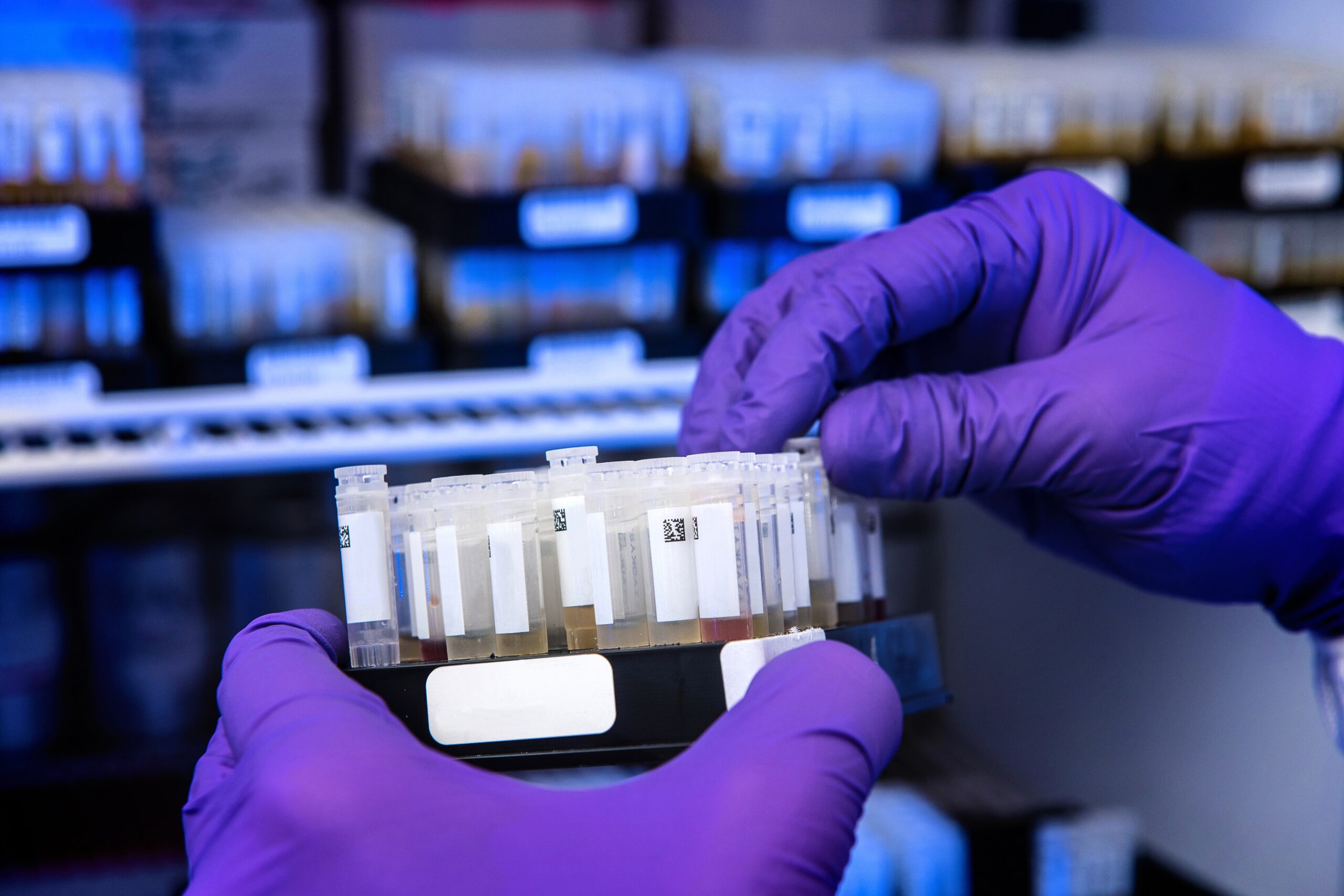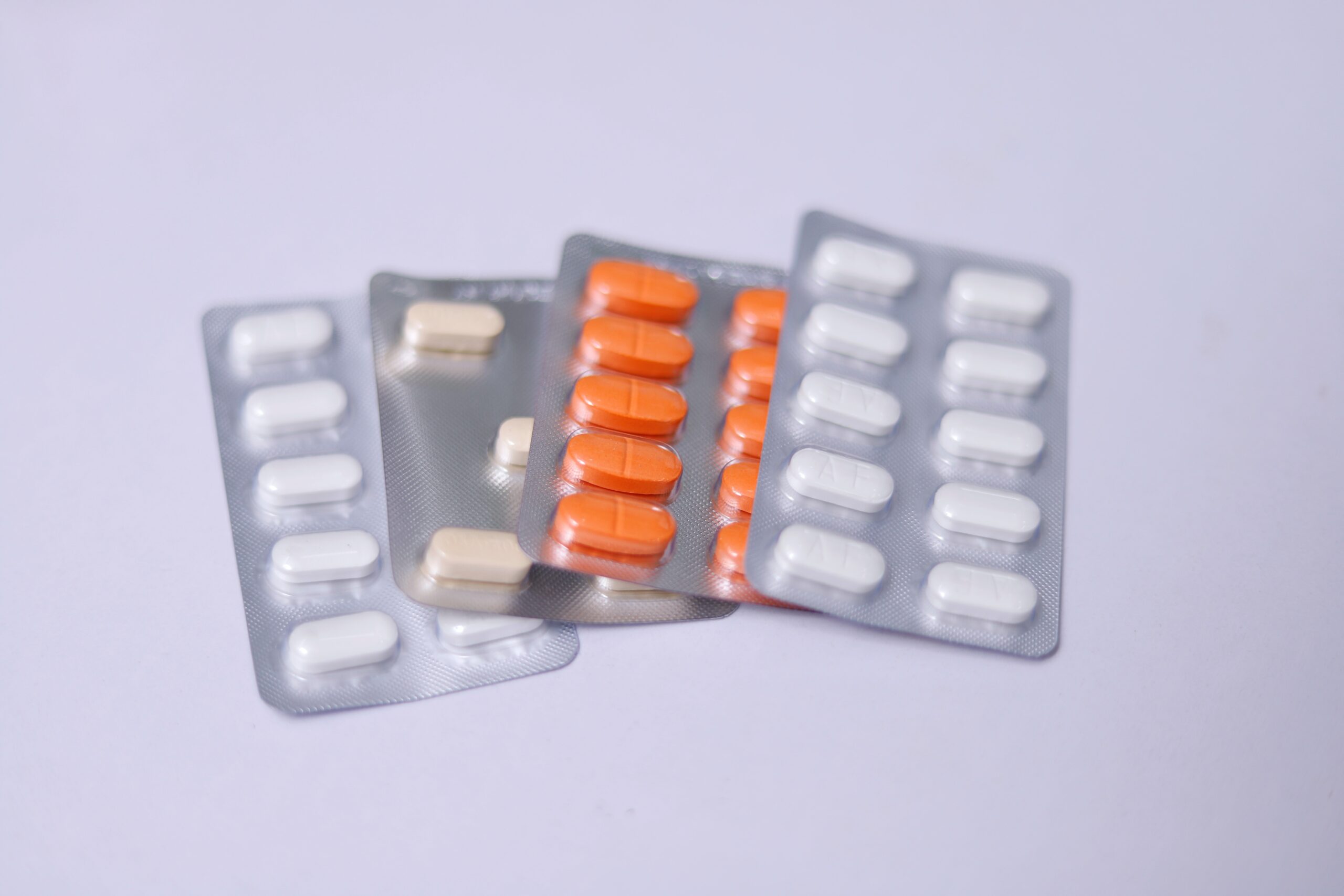Giardiasis is a disease from an infectious parasite called Giardia duodenalis or Giardia lamblia. Different kinds of this parasite exist. But just two types live in human intestines; all others are animal-only. It infects the duodenum and small intestine.
Here, the parasites' growth stages, known as trophozoites, latch on to the gut walls. This leads to the damage of important parts.
The reservoir for Giardia lamblia is humans, but also domestic and wild animals belonging to mammals. Infection occurs via the oral route. The infection can be asymptomatic, and the symptomatic type is characterized by diarrhea. Drugs are used to eliminate the parasite from the human body. Giardiasis is the most common protozoan infection in humans worldwide. Giardiasis is Europe's most frequently reported food- and water-borne parasitic disease.
The incidence of giardiasis is higher in developing countries with lower levels of hygiene and poorer quality sanitation infrastructure. Children are also more frequently affected. The disease is still under-recognized and under-reported. Rising temperatures and more extreme climate change events are expected to increase the number of giardiasis cases.

The harmful cysts of Giardia lamblia![]() travel to the belly through our food pathway. Here, stomach acid wakes them up into a form called trophozoites. These trophozoites move to the first part of the small intestine, the duodenum, and then to the rest of the small intestine. They stick to the wall of the intestine.
travel to the belly through our food pathway. Here, stomach acid wakes them up into a form called trophozoites. These trophozoites move to the first part of the small intestine, the duodenum, and then to the rest of the small intestine. They stick to the wall of the intestine.
This causes harm to the area that absorbs nutrients. Then, due to the alkaline condition, these become cysts again. This change happens due to bile, which oozes into the duodenum. These pests then continue to the large intestine with our digested food. Finally, they leave our body through the stool.
Before the microscopic parasites invade the body, they become encased in hard shells called cysts, which allows them to last months outside the body in cold water or soil. An infected person can have Giardia in the body unnoticed and infect other people where hygiene practices are inadequate.
Giardiasis infects by the oral route![]() . The oral route means that the carrier is ingested food or drinks water. Food, drink, and food can be contaminated during extraction, processing, storage, distribution, preparation, or serving through dirty cooking utensils or tableware or dirty hands.
. The oral route means that the carrier is ingested food or drinks water. Food, drink, and food can be contaminated during extraction, processing, storage, distribution, preparation, or serving through dirty cooking utensils or tableware or dirty hands.
The primary sources of infection are:

Water – Often, people get sick after consuming water that hasn't been treated properly or having fun in dirty water or soil. Drinking water or touching contaminated water in pools or natural bodies of water like lakes and rivers can lead to infection. Giardia cysts, while small, prove tough. Water treatments, like chlorination![]() , can't eliminate them, particularly in cold water. The cysts can stay harmful in moist, cold surroundings for months on end. They won't bow down to chlorine.
, can't eliminate them, particularly in cold water. The cysts can stay harmful in moist, cold surroundings for months on end. They won't bow down to chlorine.
Food – Daycare centers often see frequent infections, and improper food handling can also cause them. Infections mainly travel by mouth via food that has cysts in it. Bad hygiene practices make the chance of getting a giardiasis infection higher. Parasites can contaminate food products and can then be transferred to everyday objects, such as doorknobs. Thus, contact with contaminated objects or food can result in giardiasis infection.
Humans – Giardiasis can be contracted through contact with an infected person or animal. Protozoan cysts are persistent and remain infectious outside the host for several months, provided they are in a moist and cold environment. Infection spreads quickly by the oral route, mainly through contaminated hands and direct contact with an infected person. For giardiasis, hygiene is essential, especially frequent hand washing.
A risk factor is a characteristic, behavior, trait, or condition that increases the likelihood of getting sick. They often coexist and interact with each other. Some people in an exposed group may have a higher chance of getting giardiasis. Risk factors for pharyngitis include:

Childhood age – Giardiasis is particularly common in children![]() . It also spreads rapidly in institutions where many people are housed together, such as kindergartens, children's homes, and nursing homes. Giardiasis is also more common in children. Children are also at risk of a severe course of the disease.
. It also spreads rapidly in institutions where many people are housed together, such as kindergartens, children's homes, and nursing homes. Giardiasis is also more common in children. Children are also at risk of a severe course of the disease.
Immunodeficiencies – People with immunodeficiencies, whether primary or as a result of immunosuppressants or other diseases, and malnourished and cachexia patients are at greater risk of developing the disease. Recurrent infections that are difficult to treat can be a symptom of immunodeficiency. Primary immunodeficiency disorders are usually diagnosed in children and are due to genetic conditions. Confirmation of the diagnosis requires additional immune function tests, depending on the suspected cause.
Decreased acidity of gastric juice – Due to illness or taking common drugs that reduce hydrochloric acid secretion is also a contributing factor to infection. Abnormalities in it can also be caused by a gastrectomy, i.e., the complete removal of the stomach or a significant reduction of this organ. The most important indications for surgery are cancer, peptic ulcer disease, or significant obesity.
Travel – Giardiasis causes many cases of travelers' diarrhea. Thus, travel to countries in the intertropical zone is also a risk factor. The risk is increased when hygiene is compromised during travel. Drinking streams, rivers, and lakes with unboiled water increases the risk.

Health effects range from asymptomatic to severe chronic diarrhea. More Giardia cysts in the patient's body result in more severe infections, as the parasites use essential host nutrients. Untreated giardiasis can have a very troublesome and prolonged course. Giardiasis is usually not life-threatening, except for people in poor health, malnourished, or weak immune systems.
Surviving giardiasis does not result in developing immunity to reinfection, so survivors can also become ill. Giardiasis develops after a few days to even a few weeks after the parasite enters the body. The average duration of the incubation period is nine days. Sometimes, the disease is entirely asymptomatic![]() . The disease then usually resolves spontaneously. Then, infected people can unknowingly spread the parasite and infect other people.
. The disease then usually resolves spontaneously. Then, infected people can unknowingly spread the parasite and infect other people.
In the symptomatic type, the course of giardiasis can be various. Giardiasis can be acute![]() or chronic
or chronic![]() . The regular kind of giardiasis may occur due to inadequate treatment. In this type of disease, the symptoms may worsen periodically and be interspersed with time off. Symptomatic giardiasis infection gives the following signs:
. The regular kind of giardiasis may occur due to inadequate treatment. In this type of disease, the symptoms may worsen periodically and be interspersed with time off. Symptomatic giardiasis infection gives the following signs:

Diarrhea – In the acute type of Gardiasis, patients experience watery, smelly diarrhea without pathological admixtures of mucus or blood. In the chronic type, fatty diarrhea may be present. It is a variant of diarrhea in which the stool is greasy. In chronic giardiasis, the feces are glossy, may have fat droplets on the surface, and are difficult to flush. It is most often associated with problems in digestion or absorption of fats from food.
Abdominal pain – Diarrhoea is usually accompanied by abdominal pain and cramps. Epigastric pain occurs in both acute and chronic giardiasis. Abdominal pain is the body's physiological defense mechanism that signals developing disease states, abnormalities in visceral organs, and harmless and natural biological processes. Therefore, when this symptom occurs without diarrhea, it may indicate a different condition.
Nausea – In giardiasis, different stomach issues come about. Nausea is one of them; it lessens the hunger. It's a sensation of unease in the belly, a sense of wanting to throw up. Often, it's paired with a washed-out color to the skin, more sweat, saliva, a drop in blood pressure, and a feeling of fainting.
Flatulence – During Giardiasis, one might experience a disagreeable sensation of being overly full in their stomach area, or flatulence, often following a meal. This situation is typically paired with the regular release of gas. Flatulence is a natural way of removing gas bubbles from the digestive tract. Their most common cause is excessive swallowing of air and insufficient digestion of food and its fermentation in the digestive tract.
Weight loss – These unpleasant symptoms related to the digestive tract may result in loss of appetite and less frequent food intake. It is the reason why patients often lose weight in the course of Gardiasis, especially in the chronic type. When rapid weight loss occurs, it can result in complications such as intestinal malabsorption. In giardiasis, the risk of weight loss![]() is high and significant.
is high and significant.
Fever – In rare cases of Gardiasis, fever is present. Sometimes, the main symptoms of giardiasis are intermittent short-lived fevers accompanied by malaise and low blood pressure. Innenietypical symptoms of giardiasis include an allergic rash and persistent acne on the face.
Intestinal malabsorption – In the chronic type of Gardiasis, intestinal malabsorption may occur. It causes complications such as anemia![]() and vitamin deficiencies. Anemia is customarily referred to as anemia. A reduced level of hemoglobin in the body characterizes this condition. Haemoglobin is a protein found in erythrocytes, i.e., red blood cells, which transport oxygen from the lungs to all body tissues. Vitamin deficiency, on the other hand, also referred to by specialists as avitaminosis, is a state of complete absence or significant deficiency of a selected vitamin or vitamin group.
and vitamin deficiencies. Anemia is customarily referred to as anemia. A reduced level of hemoglobin in the body characterizes this condition. Haemoglobin is a protein found in erythrocytes, i.e., red blood cells, which transport oxygen from the lungs to all body tissues. Vitamin deficiency, on the other hand, also referred to by specialists as avitaminosis, is a state of complete absence or significant deficiency of a selected vitamin or vitamin group.

Examining a patient through conversation is part of the diagnosis process, yet medical exams are essential to confirm parasitic existence. Anyone living with the patient needs testing because giardiasis spreads easily. A variety of tests are used to diagnose giardiasis:
Blood morphology – A medical test called a blood count with a smear helps in detecting illnesses. It reveals the existence of eosinophils, certain cells that look acidic. Remember, though, that detecting G. duodenalis antibodies, through what we call serological tests![]() , offers no benefit to the final diagnosis. So, you shouldn't rely on those tests.
, offers no benefit to the final diagnosis. So, you shouldn't rely on those tests.
Fecal examination – A parasitological examination of the feces for the presence of cysts is necessary. It is a test you must repeat at various stages of Giardiasis disease. Stool examination for cysts is the primary diagnostic method, but special tests can be used in addition to it. It tests for the detection of parasite antigens![]() in feces and the detection of parasite DNA
in feces and the detection of parasite DNA![]() in feces.
in feces.
Examination of duodenal contents – An examination of duodenal contents taken during endoscopy![]() and a morphological assessment of a section of duodenal or small bowel mucosa can also be performed. The material collected is examined immediately after collection. Only viable protozoa are diagnosed using this method. These examinations are done in exceptional cases with indications for endoscopy or histological examination of the intestinal mucosa.
and a morphological assessment of a section of duodenal or small bowel mucosa can also be performed. The material collected is examined immediately after collection. Only viable protozoa are diagnosed using this method. These examinations are done in exceptional cases with indications for endoscopy or histological examination of the intestinal mucosa.

Treatment is given to all infected patients, even if they are asymptomatic. It is the goal to minimize the risk of spreading giardiasis. Treatment of giardiasis includes symptomatic treatment of diarrhea, as with different types of acute diarrhea. Adequate hydration with electrolyte solutions is essential. The patient may also take anti-diarrhoeal drugs such as loperamide![]() . In addition, drugs are used to eliminate the parasite from the body.
. In addition, drugs are used to eliminate the parasite from the body.
Antiprotozoal drugs – There's a variety of medicines like n**********e, m***********e, mebendazole, tinidazole, albendazole, and paramomycin used to take care of the parasite. If it's a first infection or returning, the regimen can differ. Viewing no parasites in the stool from 2 to 8 weeks after treatment finishes is a sign of successful recovery.
A positive outlook can be reached if the parasite is gone. Recurrences after treatment occur and may be asymptomatic, so post-treatment stool checks for Giardia are recommended.

Untreated giardiasis can take on a chronic type that is more difficult to treat. It is then necessary to bring in antiparasitic treatment. In addition to it, the following complications can occur as a result of giardiasis:
Post-infectious irritable bowel syndrome – Post-infectious irritable bowel syndrome![]() is diagnosed based on chronic intestinal dysfunction developing after giardiasis. Signs like chronic abdominal pain, bloating, constipation, or diarrhea characterize irritable bowel syndrome. Treatment depends on individual symptoms and usually includes drug therapy, lifestyle changes, and diet. Despite its good prognosis for many people, it significantly reduces the quality of daily functioning.
is diagnosed based on chronic intestinal dysfunction developing after giardiasis. Signs like chronic abdominal pain, bloating, constipation, or diarrhea characterize irritable bowel syndrome. Treatment depends on individual symptoms and usually includes drug therapy, lifestyle changes, and diet. Despite its good prognosis for many people, it significantly reduces the quality of daily functioning.
Food allergies – Patients who have had giardiasis may develop food allergies![]() . A food allergy is a syndrome of repetitive symptoms occurring in susceptible people after ingesting food that does not cause any discomfort in healthy people. Ingestion of the allergenic food causes gastrointestinal symptoms in the food-allergic patient and different symptoms of concomitant allergic diseases. The most important management of food-allergic patients is to avoid allergenic food.
. A food allergy is a syndrome of repetitive symptoms occurring in susceptible people after ingesting food that does not cause any discomfort in healthy people. Ingestion of the allergenic food causes gastrointestinal symptoms in the food-allergic patient and different symptoms of concomitant allergic diseases. The most important management of food-allergic patients is to avoid allergenic food.
Giardiasis is a parasitic disease. The protozoan Giardia lamblia causes it. Infection involves the duodenum and small intestine, where the trophozoites, or vegetative forms of the parasite, stick to the gastrointestinal tract walls and cause the destruction of vital structures. The reservoir for Giardia lamblia is humans, but also domestic and wild animals belonging to mammals.
Infection occurs via the oral route. Giardiasis mainly frequently affects children. It also spreads rapidly in institutions where many people live together, such as kindergartens, children's homes, or nursing homes. Those with weak immune systems face a higher risk of getting the disease. You may not show symptoms even if infected. Giardiasis may be short-term or long-term.
Usual signs include diarrhea and varied stomach discomfort. To find out if you have giardiasis, doctors check your stool or sample from your small intestine. To kill the parasite, special drugs are used. Without treatment, short-term giardiasis can turn into long-term. Giardiasis can lead to health issues like sensitive bowels and food allergies.